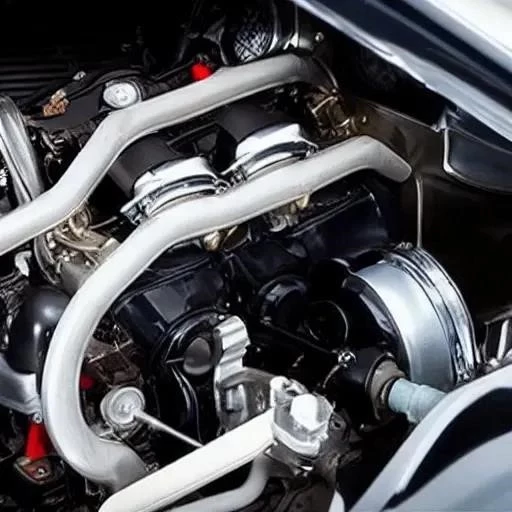Picture this: You’ve just arrived home after a spirited drive, the engine cooling down, a subtle hum lingering in the air. You turn off the ignition, pull out the key, yet the unmistakable whir of your engine fan continues. For many, this peculiar persistence can trigger a moment of mild panic, a fleeting thought of an impending automotive crisis. Is something fundamentally wrong? Is your battery silently draining away? These are common and entirely understandable concerns, reflecting our deep reliance on these complex machines.
However, what if this seemingly anomalous behavior isn’t a glitch, but rather a testament to the sophisticated engineering woven into modern vehicles? Far from being a mere malfunction, the lingering rotation of your engine fan after shutdown is often a perfectly normal, even crucial, aspect of your car’s thermal management system. It’s a silent guardian, diligently working to protect vital components from the ravages of residual heat, ensuring longevity and optimal performance. Understanding this intricate dance between heat and cooling systems offers not just peace of mind but also a deeper appreciation for automotive intelligence.
Understanding Your Vehicle’s Thermal Guardian: Engine Fan Operation Insights
For those curious about the mechanics behind this post-shutdown whir, here’s a quick overview of what drives your engine fan’s behavior, distinguishing between normal protective functions and potential issues requiring attention:
| Aspect | Description | Significance |
|---|---|---|
| Normal Operation | Engine cooling fans often run for a period after the engine is turned off, especially following high-load driving or in hot weather. This dissipates residual heat from the engine block and radiator, preventing heat soak. | Crucial for preventing damage to sensitive components like the cylinder head, gaskets, and hoses from excessive residual heat. |
| A/C System Influence | If the air conditioning was active, the condenser fan (often shared with the engine cooling fan) may continue to run to release pressure from the A/C system, even after the car is off. | A normal function designed to protect the A/C compressor and maintain system efficiency. |
| Coolant Temperature Sensor | This sensor monitors engine coolant temperature. If it detects temperatures above a set threshold, it will signal the fan to run, even after ignition is off, until a safe temperature is reached. | A primary safeguard. A faulty sensor could cause the fan to run excessively or not at all. |
| Fan Relay Malfunction | The fan relay acts as a switch, controlling power to the fan. If it gets stuck in the “on” position, the fan will run continuously, draining the battery. | A common cause of abnormal, prolonged fan operation requiring professional diagnosis and replacement. |
| Wiring Issues/Short Circuit | Less common, but a short circuit in the fan’s wiring or control module could bypass the normal control mechanisms, causing it to run constantly. | Requires immediate professional inspection to prevent battery drain and potential electrical fires. |
| Battery Drain Risk | While normal post-shutdown fan operation is engineered to minimize battery impact, prolonged or abnormal running can lead to a dead battery. | Monitoring the duration is key. If it runs for more than 10-15 minutes consistently, it warrants investigation. |
For further detailed technical insights and troubleshooting guides, you can consult AutoZone’s Repair Guides.
At its core, the engine fan’s operation is a sophisticated ballet of sensors, relays, and electronic control units, all orchestrated to maintain optimal engine temperature. In hotter climates or after demanding journeys—think towing a trailer up a steep incline or navigating stop-and-go traffic on a sweltering day—the engine accumulates an enormous amount of heat. Even after the ignition is cut, this latent heat can continue to rise, potentially damaging crucial components like cylinder heads, gaskets, and various rubber hoses. The fan, sensing these elevated temperatures via the coolant temperature sensor, kicks into action, efficiently drawing cooler air across the radiator and dispersing this residual heat. This proactive cooling is a remarkably effective strategy, preventing what’s known as “heat soak,” a condition that can severely shorten the lifespan of an engine.
However, the line between normal protective behavior and an underlying issue can sometimes blur. While a fan running for a few minutes after shutdown is typically benign, an engine fan that whirs incessantly for prolonged periods, perhaps fifteen minutes or more, or even starts running when the engine is cold, signals a potential problem. These scenarios often point to a malfunctioning coolant temperature sensor, which might be erroneously reporting high temperatures, or a stuck fan relay that remains perpetually in the “on” position. Both situations, while not immediately catastrophic, can lead to a severely drained battery, leaving you stranded and frustrated. Recognizing these subtle cues transforms you from a passive observer into an empowered and informed vehicle owner.
Industry experts universally champion the proactive approach. “Modern vehicles are marvels of self-preservation,” states Dr. Evelyn Reed, a renowned automotive engineer specializing in thermal dynamics. “When your fan continues after the engine is off, it’s often merely performing its duty. But if that duty becomes an obsession, running for excessively long durations or unexpectedly, it’s your car whispering for attention. Ignoring these signals is a missed opportunity for early intervention.” Diagnostic tools, once the exclusive domain of mechanics, are increasingly accessible, allowing owners to glean insights into their vehicle’s health. By integrating insights from these tools with a keen awareness of your car’s normal operating patterns, you can quickly differentiate between a protective measure and a pending repair, thereby safeguarding your investment and ensuring continued reliability.
Ultimately, the lingering hum of your engine fan isn’t a cause for alarm but an invitation for understanding. It underscores the incredible intelligence embedded within our vehicles, constantly working to optimize performance and prevent damage. As automotive technology relentlessly advances, cars are becoming more than just transportation; they are sophisticated partners, communicating their needs in nuanced ways. By tuning into these signals, embracing routine maintenance, and leveraging diagnostic capabilities, we empower ourselves to maintain peak vehicle health. So, the next time your engine fan performs its post-shutdown serenade, remember: it’s likely just doing its job, a testament to the forward-thinking design that keeps you safely and reliably on the road, year after year.






